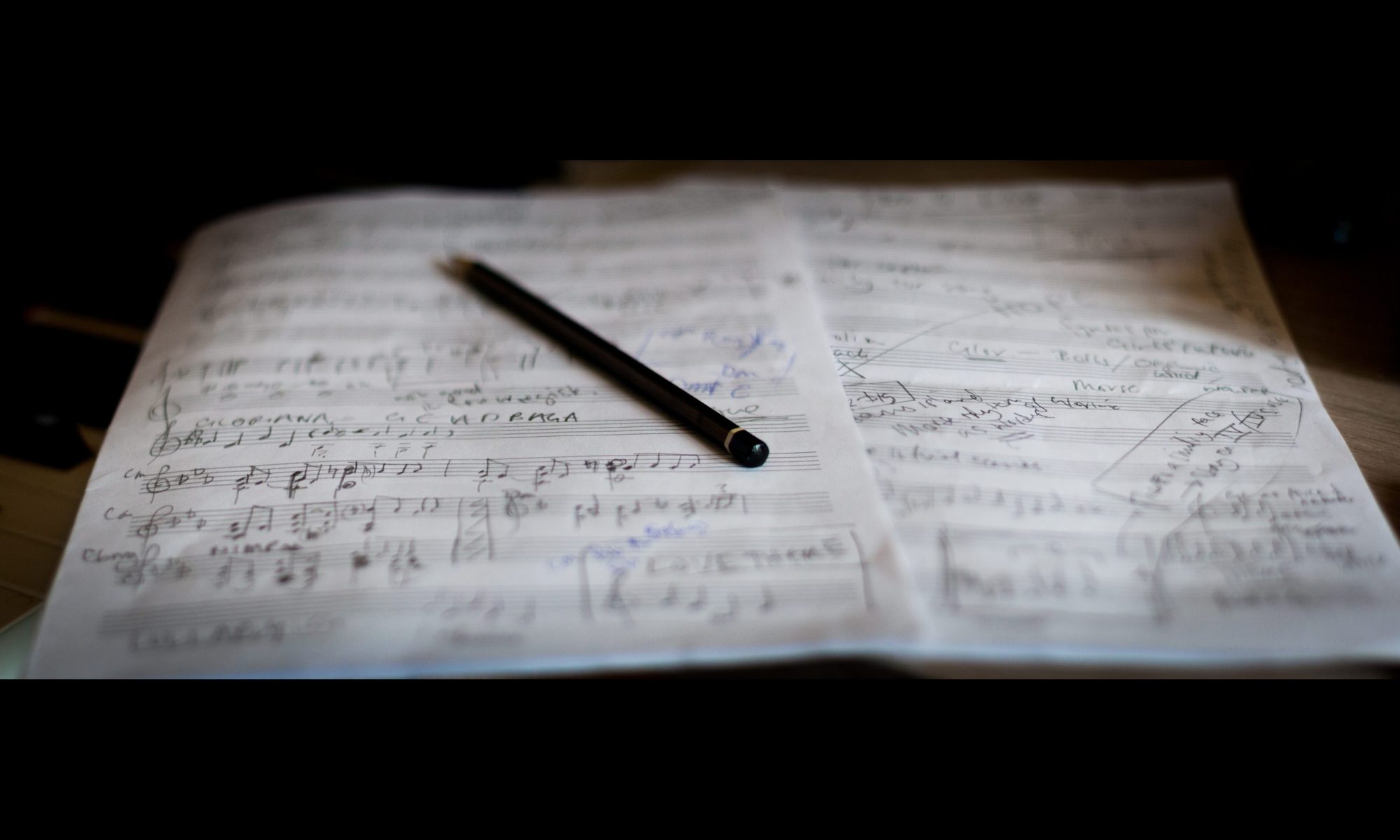Composing on a computer sequencer with software/outboard synthesizers and samples is quite a bit different to composing for real instruments. There’s no substitute for an orchestra when that’s the sound you want. However, if you think of your kit as something other than an orchestra-in-a-box, and write instead to its strengths, you might not ever need that orchestra. I must admit, this is one of the most useful audio post-production techniques I learned at film school.
I’m a great admirer of Mark Snow’s work (The X-Files, Smallville) who is mostly pure and unabashed synthetics, especially his early works on the first season of X-Files. I read an interview ages ago that I vaguely remember said he originally moved to LA with his family nothing but $5000 to set up all his kit and live on.
So it seems he bought what he could afford and wrote to the strengths of that equipment. He didn’t try and compose all classical-styley with his fake string patches. He used them more like sound design: he was more interested in the quality of the sound rather than the traditional use associated with the instrument that sound was artificially attempting to emulate. And in doing so he created a unique and original tonal (and often atonal) soundscape for this brand new, kooky and different series.
I’ve heard him progress from these totally synthetic patches through to short loop, glitchy sampled instruments in the later seasons of X-Files and further on to the most recent seasons of Smallville where it’s clear his equipment is the best that money can buy, and there’s also sizeable budget for recording cues with a live orchestra.
These are truly sumptuous, thoroughly in keeping with the lush visuals and massively epic set-pieces, and I really don’t mind saying that it fills me with glee when he quotes a theme or two from the 1980’s Superman films. These music cues are, however, specifically written for the real instruments, and I’d like to think that I also hear some of Mark’s glee at writing for a full orchestra coming through in his music.
Do a little ‘music audit’: for example, if your oboe patch sounds fake and quacky, don’t use it like you would a real oboe. See what it sounds like super low or way up high, or with different velocities; if the attack is naff but the tail of the sound is actually quite pretty – then why not fade in with a volume curve and add the attack from another patch that’s better. Play with the breath control and the vibrato rate; equalise and reverberate; time stretch and put the result through some FM ring modulation, experiment, play and create…
These days, nevertheless, with increasing RAM and chip speeds, the sampling technology is improving and ‘real’, acoustic instruments are getting better. However, you still might find that you buy one orchestral sample package and really only the piano and the french horns are of value, or maybe it’s just the tremolo and spiccato strings are awesome and you’re already sketching out the next Batman movie score in the style of Hans Zimmer.
And then you’ll shell out for another, but, in this one, you find that, actually, that oboe ain’t so bad but the strings are rotten. The next one may even have the added bonus on a few of its instrument patches of being able to ‘legato’ transition from one note to another in a realistic ‘human’-sounding way (an effect I’ve fallen in love with! Cue some smooooooth wavering strings!). Eventually, though, you’ll build up a palette of sounds that works for you.
The ultimate goal of film music written on a computer is to still have the heart and emotion that is required by the picture. Two ways to ‘humanize’ your computer-generated score are really both quite simple: randomize and de-quantize. The latter is really a specific version of the former. Randomize your piano velocities to mimic a human player, who, no matter how skilled and talented, would never be able to hit the keys at exactly the same speed.
Quantization is the degree to which the music follows the precise beats and subdivisions of the tempo, the timing. De-quantize by varying the accuracy of note attack, don’t line up the attacks of the notes in the same chord, use the randomization feature (if it has one) of your sequencer to save time, then just go through and check it against your own tastes of what sounds ‘human’ and what just sounds like a mistake (which is also arguably a pretty human characteristic.).
The last computer sequencing technique I can think of for now is to add a real recorded acoustic instrument. It’s possibly a bit of a cop-out, though it’s rather cheaper than a forty-piece orchestra or big band. For some reason, sticking a solo instrument over a bunch of synthetic instruments or sound design makes the whole thing sound way more ‘authentic’. It’s weird but it does work. Don’t ask me why.
Here, Mark Oates gives a thorough and very technical description of how he achieved a more realistic sound with soundfonts. He wrote it originally back 2003 and it’s amazing how much the technology has progressed (and simultaneously reduced in price) since then, but his commitment to detail and precision borders on the obsessive and is a fascinating read if you like that sort of thing.
Then there’s sound design, creating sounds from scratch or moulding found and recorded sounds into weird and wonderful sonic landscapes that bear little or no resemblance to their source. I’ll leave that for another time, I think.


One Reply to “Tips for Composing Music With A Computer”